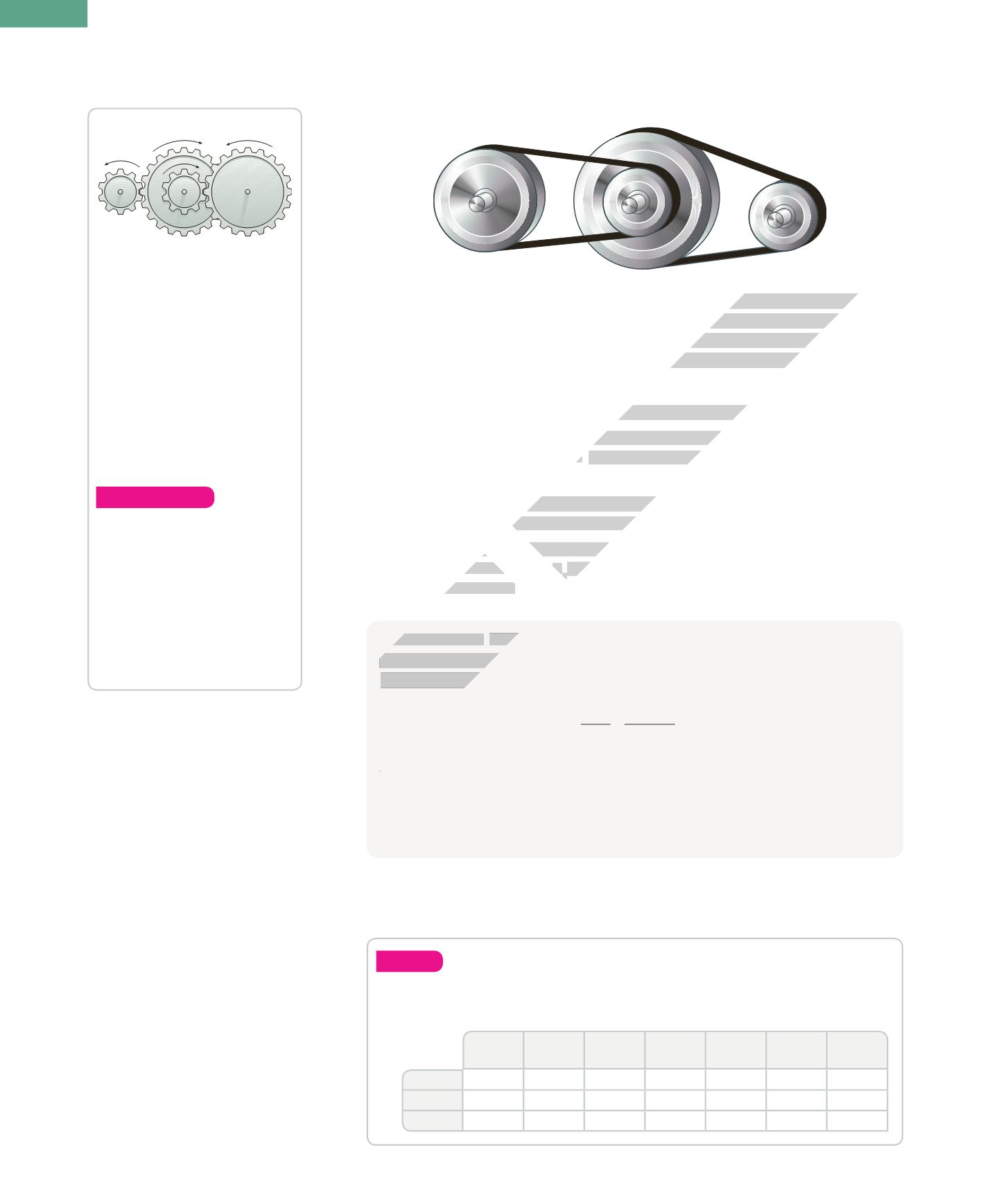
110
Understand
17.
Look at the gear train and
describe how it moves,
direction and speed of
each gear in relation to
the one that begins the
movement. How fast will
each one go if the first
one, which is the motor,
turns at 60 rpm?
3.3.
Belt drives and gear trains
To calculate the
ratio of transmission
between the first wheel and the last
wheel of a belt drive, we must multiply the ratios of transmission of the first
pair of wheels and the second pair of wheels
N
1
D
2
·
D
4
N
4
=
D
1
·
D
3
N
is the speed of rotation and
D
is the diameter of the wheel.
We can also find the radius (
r
) or the circumference of each wheel and use
those measurements to calculate the ratio of transmission. For gear trains,
we make these calculations using the number of cogs or teeth (
Z
).
Gear train
A gear train is a system of
interconnected gears. In this
example, gear 1 transmits motion
to gear 2. Gear 3 transmits
motion to gear 4. Gears 2 and
3 share the same axis, so they
move together.
Applications:
tools, cars, robotics,
and home appliances, such as a
hand mixer or juicer. Gear trains
can increase or decrease speed
without using large wheels or
gears.
1
2 3
4
Apply
18.
Count thenumber of teeth in thegearwheels and sprockets of your bicycle.
Then calculate the ratio of transmission for each combination.
Sprocket
1
Sprocket
2
Sprocket
3
Sprocket
4
Sprocket
5
Sprocket
6
Sprocket
7
Wheel 1
...
...
...
...
...
...
...
Wheel 2
...
...
...
...
...
...
...
Wheel 3
...
...
...
...
...
...
...
If there were more pairs of wheels in this system, we would continue by multiplying
the ratio of each pair with the ratio of the next pair.
A belt drive is a system of pulleys connected by belts. Each belt connects a pair
of pulleys, so they turn together. Un tren de poleas consta de varias parejas de
poleas encajadas en las que las intermedias giran a la vez. De un modo similar,
podemos definir también un tren de engranajes, que en este caso estará formado
por engranajes o ruedas.
To understand how a belt drive works, we can analyse the example above:
❚❚
Wheel 1 turns wheel 2, which moves faster because it is smaller. The size ratio
between the wheels is
D
1
/ D
2
=
1.5. If wheel 1 makes 1 rotation, wheel 2 makes
1.5 rotations.
❚❚
Wheel 2 and wheel 3 are connected to the same axis, so they turn together. If
wheel 2 makes 1.5 rotations, wheel 3 also makes 1.5 rotations.
❚❚
Wheel 3 turns wheel 4, which moves faster because it is smaller. The size ratio
between the wheels is
D
3
/
D
4
= 2. If wheel 3 makes 1.5 rotations, wheel 4 makes
1.5 x 2 = 3 rotations.
D
1
= 24 mm
D
2
= 16 mm
D
4
= 16 mm
D
3
= 32 mm
ADVANCE
EDITION


